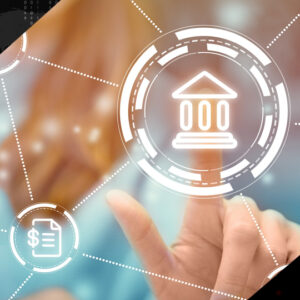Digital means of payment have gained new territory in recent years due to new technologies, players and regulations that drive the payments industry towards innovation and change. This trend is only becoming more pronounced, especially following the global COVID-19 pandemic, and a transition toward improved digital payments solutions continues. Jason Simon, a FinTech and digital payments expert, provides insight into how innovation is transforming the digital payment space and leading to new acquisition models.
The pandemic we experienced last year served as an accelerator of what was already taking place not only in industry, but by the consumer, who quickly adopted new forms of payment associated with technology. This allows consumers to avoid contact for health reasons, and also enhances speed, security and convenience when it comes to making transactions.
The growth of FinTech and the use of data (big data and machine learning) have generated a scenario of greater competence and greater opportunities, in an ecosystem that must still grow locally and regionally. Explains Simon, “In this opening process, new players are seen peeking out, open to new acquisition services, approaching the customer and accompanying them with their needs.”
A global trend is acquiring models that favor more competitive ecosystems for industry and consumers, both in technology and service, where the multi-acquisition option allows a set of digital payment methods to be accepted regardless of who processes them. In this way, the selection of the supplier would be more transparent and depending on the needs of the consumer of the trade.
From Global Processing, customer service that is in tune with the process that was so well received by customers from the issuing side is coming to market. This is helping in the development of the product that the customer needs. Market demands much more than just limiting the acquisition service to the delivery of a POS, but a partner that provides them with the necessary solution in that acquisition.
Experts agree that it is important to work on regulatory changes that allow and stimulate the development of alternative means of payments that would take the place of cash and for the development of new tools. The expansion of the acquisition offer should focus on new services that facilitate these new means. “Opening up the acquisition stimulates competition, and the entry of new players certainly leads to innovation and value generation to trade and the consumer ultimately,” adds Simon. “This also gives commerce the ability to expand the infrastructure and redundancy of its transactional flow into multiple acquisitions and at the end of the day optimize its channel, having the option to choose according to results.”
Consumers expect and are adopting alternative forms of payment to cash. The pandemic accelerated the adoption of cashless solutions and digital payments. Nearly 70% of consumers say they use less cash than before. In one survey, 54% of respondents say they have used their cards more during the pandemic and plan to continue using them as often in the future. eCommerce became one of the most available channels to access many products and services. In addition, innovative issuers began offering banking services through WhatsApp, increasing online account subscriptions and virtual card transactions, generally demonstrating that consumers are willing to adopt digitization.
The trend is that, in the coming years, through the opening of the ecosystem and new players, having as a tool technology, better services are provided for both trade and the consumer. The future scenario will allow the integration of different players, prioritizing the client, thus understanding the natural evolution of the service.



 Bitcoin
Bitcoin  Ethereum
Ethereum  Tether
Tether  Solana
Solana  USDC
USDC  Lido Staked Ether
Lido Staked Ether  XRP
XRP  Dogecoin
Dogecoin  Toncoin
Toncoin  Cardano
Cardano  Shiba Inu
Shiba Inu  Avalanche
Avalanche  TRON
TRON  Wrapped Bitcoin
Wrapped Bitcoin  Bitcoin Cash
Bitcoin Cash  Polkadot
Polkadot  Chainlink
Chainlink  NEAR Protocol
NEAR Protocol  Litecoin
Litecoin  Polygon
Polygon  Internet Computer
Internet Computer  Uniswap
Uniswap  LEO Token
LEO Token  Dai
Dai  First Digital USD
First Digital USD  Ethereum Classic
Ethereum Classic  Hedera
Hedera  Stacks
Stacks  Aptos
Aptos  Mantle
Mantle  Stellar
Stellar  Cronos
Cronos  Cosmos Hub
Cosmos Hub  Filecoin
Filecoin  OKB
OKB  Render
Render  Renzo Restaked ETH
Renzo Restaked ETH  Pepe
Pepe  XT.com
XT.com  Immutable
Immutable  Bittensor
Bittensor  Arbitrum
Arbitrum  dogwifhat
dogwifhat  Maker
Maker  Wrapped eETH
Wrapped eETH  The Graph
The Graph  Optimism
Optimism